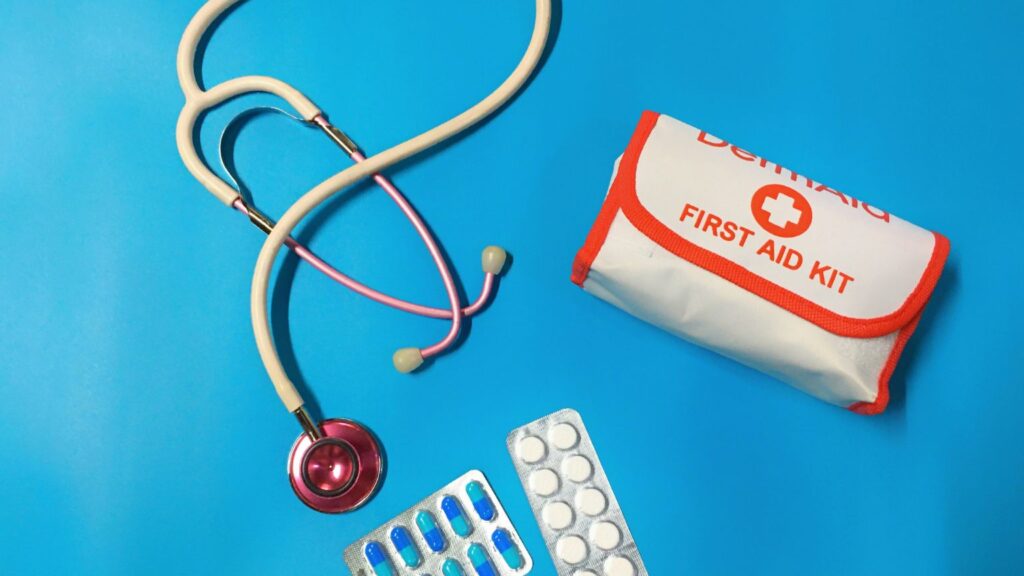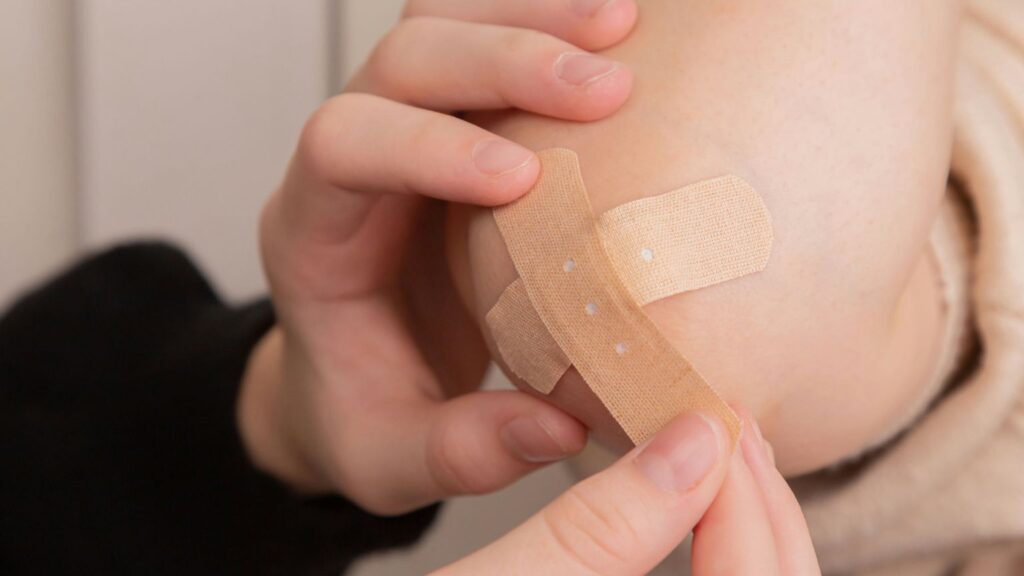What is an IFAK? An Individual First Aid Kit (IFAK) is a compact, portable medical kit designed to provide immediate care for traumatic injuries in emergency situations. Originally developed for military use, the IFAK is now widely used by civilians, law enforcement, and emergency responders. The primary purpose of an IFAK is to treat severe, life-threatening injuries until professional medical help is available.
Do You Need an IFAK?
The necessity of an IFAK depends on your activities, environment, and level of preparedness. Here are some factors to consider:
- High-Risk Occupations: If you work in law enforcement, the military, emergency medical services, or any job where you might encounter traumatic injuries, an IFAK is essential.
- Outdoor Enthusiasts: Hikers, campers, hunters, and outdoor adventurers should carry an IFAK due to the potential for accidents and injuries in remote areas.
- Preparedness Mindset: If you are committed to being prepared for emergencies, having an IFAK is a logical step. It can be a crucial component of your personal emergency preparedness kit.
- Urban and Travel Safety: In urban environments or when traveling, an IFAK can provide peace of mind by equipping you to handle unexpected emergencies, such as accidents or violent incidents.

Contents of an IFAK
An Individual First Aid Kit (IFAK) is a compact, portable kit designed to address severe, life-threatening injuries and prevent infection until professional medical help can be obtained.
Here’s a detailed look at the critical components included in an IFAK for treating trauma and preventing infection:
Trauma Supplies
Trauma supplies are the critical components of an Individual First Aid Kit (IFAK) designed to address severe, life-threatening injuries. Here are the essential trauma supplies typically found in an IFAK:
- Tourniquet: Used to control severe bleeding from a limb.
- Pressure Dressing/Bandages: To apply direct pressure to wounds and control bleeding.
- Hemostatic Agents: Substances that promote rapid blood clotting.
- Chest Seals: For treating penetrating chest injuries to prevent lung collapse.
- Nasopharyngeal Airway (NPA): To maintain an open airway in an unconscious person.
Trauma supplies in an IFAK are essential for providing immediate care in life-threatening situations. These supplies are designed to control severe bleeding, maintain airways, and treat traumatic injuries effectively. Proper training in the use of these items is crucial to maximize the effectiveness of an IFAK and ensure that you can provide the best possible care in an emergency. Regularly check and maintain your IFAK to ensure all items are in good condition and ready for use.
Basic First Aid Supplies
Basic first aid supplies are the essential items included in an Individual First Aid Kit (IFAK) to address a variety of minor injuries and medical conditions. These supplies help manage cuts, scrapes, burns, and other common injuries. Here’s a detailed list of basic first aid supplies typically found in an IFAK:
- Adhesive Bandages: For minor cuts and abrasions.
- Gauze Pads and Rolls: For dressing wounds.
- Medical Tape: To secure dressings and bandages.
- Antiseptic Wipes: For cleaning wounds to prevent infection.
- Gloves: To maintain hygiene and protect both the caregiver and the injured person.
Basic first aid supplies in an IFAK are essential for managing minor injuries and preventing complications. These items enable you to provide initial care and comfort, reducing the risk of infection and promoting healing until professional medical help is available.
Regularly check your IFAK to ensure all supplies are stocked, in good condition, and not expired, and consider taking a basic first aid course to enhance your ability to use these supplies effectively.
Additional Items:
- Trauma Shears: For cutting clothing away from wounds.
- Elastic Bandages: For sprains and securing bandages.
- Survival Blanket: To prevent hypothermia in shock victims.
- Marker: For writing the time a tourniquet was applied.
Additional Considerations
- Training: Knowing how to use the items in your IFAK is as important as having them. Consider taking a first aid or trauma care course to ensure you can effectively use your kit.
- Customization: Tailor your IFAK to suit your specific needs and environment. For example, if you have specific medical conditions, include necessary medications and supplies.
- Regular Maintenance: Periodically check and replenish your IFAK to ensure all items are in good condition and within their expiration dates. Practice using the equipment so you are familiar with it in an emergency.
- Accessibility: Ensure your IFAK is easily accessible in case of an emergency. Keep it in a designated spot at home, in your car, or as part of your hiking or camping gear.
- Legal Considerations: Be aware of any legal restrictions regarding the carrying and use of certain medical items, such as prescription medications or advanced trauma care tools.

How to Carry an IFAK: Practical Tips and Best Practices
Carrying an Individual First Aid Kit (IFAK) properly ensures that you can access it quickly and efficiently in an emergency. Here are some practical tips and best practices for carrying an IFAK:
Choose the Right IFAK Pouch
- Size and Capacity: Select a pouch that fits your needs without being overly bulky. It should be large enough to hold all necessary supplies but compact enough to carry comfortably.
- Durability: Ensure the pouch is made from durable, water-resistant material to protect the contents from harsh conditions.
- Accessibility: Look for a pouch with easy-access zippers or quick-release buckles so you can open it quickly.
Placement on Your Person
- On Your Belt: Attach the IFAK to your belt for easy access. This placement is common among law enforcement and military personnel.
- On Your Body Armor or Plate Carrier: If you wear body armor, secure the IFAK to the front or side using MOLLE (Modular Lightweight Load-carrying Equipment) webbing.
- In Your Backpack: For hikers, campers, or travelers, place the IFAK in an easily accessible compartment of your backpack. Ensure it’s at the top or in a dedicated external pocket.
- In Your Vehicle: Keep an IFAK in your car’s glove compartment, center console, or trunk. Consider using a mount or strap to secure it and prevent it from moving around.
Accessibility and Consistency
- Consistency: Always carry your IFAK in the same location so you and others know where to find it in an emergency.
- Ease of Reach: Ensure the IFAK is within easy reach and can be accessed with one hand. Avoid placing it in locations that require you to remove other gear or that hinder quick access.
Quick-Release Mechanism
- Attach with Quick-Release: Use quick-release mechanisms like Velcro, snaps, or buckles for easy detachment from your gear.
- Practice Removal: Regularly practice removing the IFAK from its carrier to ensure you can do it quickly under stress.
Labeling and Identification
- Clearly Marked: Label the IFAK with a red cross or other medical symbols to make it easily identifiable in an emergency.
- Reflective Markings: Use reflective tape or patches for visibility in low-light conditions.
Customization and Modular Setups
- Modular Components: Use modular pouches that can be reconfigured based on your needs. This is particularly useful for military and tactical applications.
- Personalize the Contents: Customize the contents based on your specific activities and medical needs, ensuring that the most critical items are the easiest to access.
Regular Checks and Maintenance
- Routine Inspections: Regularly check the IFAK to ensure all items are present, in good condition, and not expired.
- Replenish Supplies: Replace used or expired items promptly to keep the kit fully stocked and ready for use.
Training and Familiarization
- Know Your Kit: Familiarize yourself with the contents and layout of your IFAK. Know where each item is located to reduce response time during an emergency.
- Training: Take first aid and trauma care courses to effectively use the contents of your IFAK.
Carrying an IFAK correctly is crucial for quick and effective emergency response. By choosing the right pouch, ensuring easy access, maintaining consistency in placement, and practicing its use, you can be better prepared to handle traumatic injuries. Regular checks and proper training further enhance your readiness, making sure that you can provide immediate care when it’s most needed.
Conclusion
An Individual First Aid Kit (IFAK) is a valuable tool for providing immediate care in emergency situations. Whether you need one depends on your risk factors, activities, and commitment to preparedness. Carrying an IFAK can make a significant difference in your ability to respond to traumatic injuries, potentially saving lives before professional medical help arrives.
Don’t Miss Out – Read It Now!
Watersports offer excitement and fun, but they also come with risks. A well-stocked first aid kit is essential for managing injuries and ensuring safety on the water. Here’s article: The Importance of a First Aid Kit for Watersports









